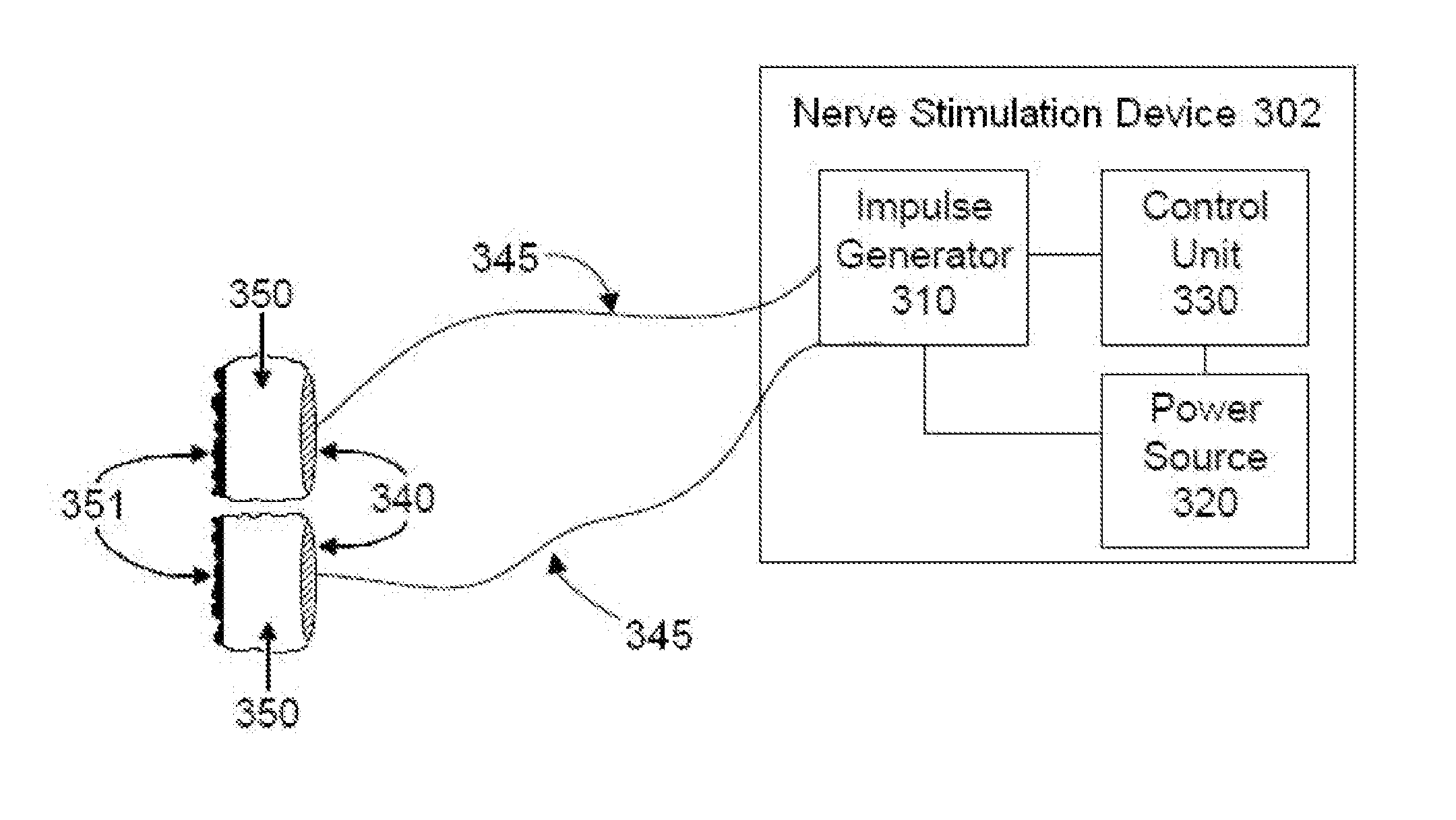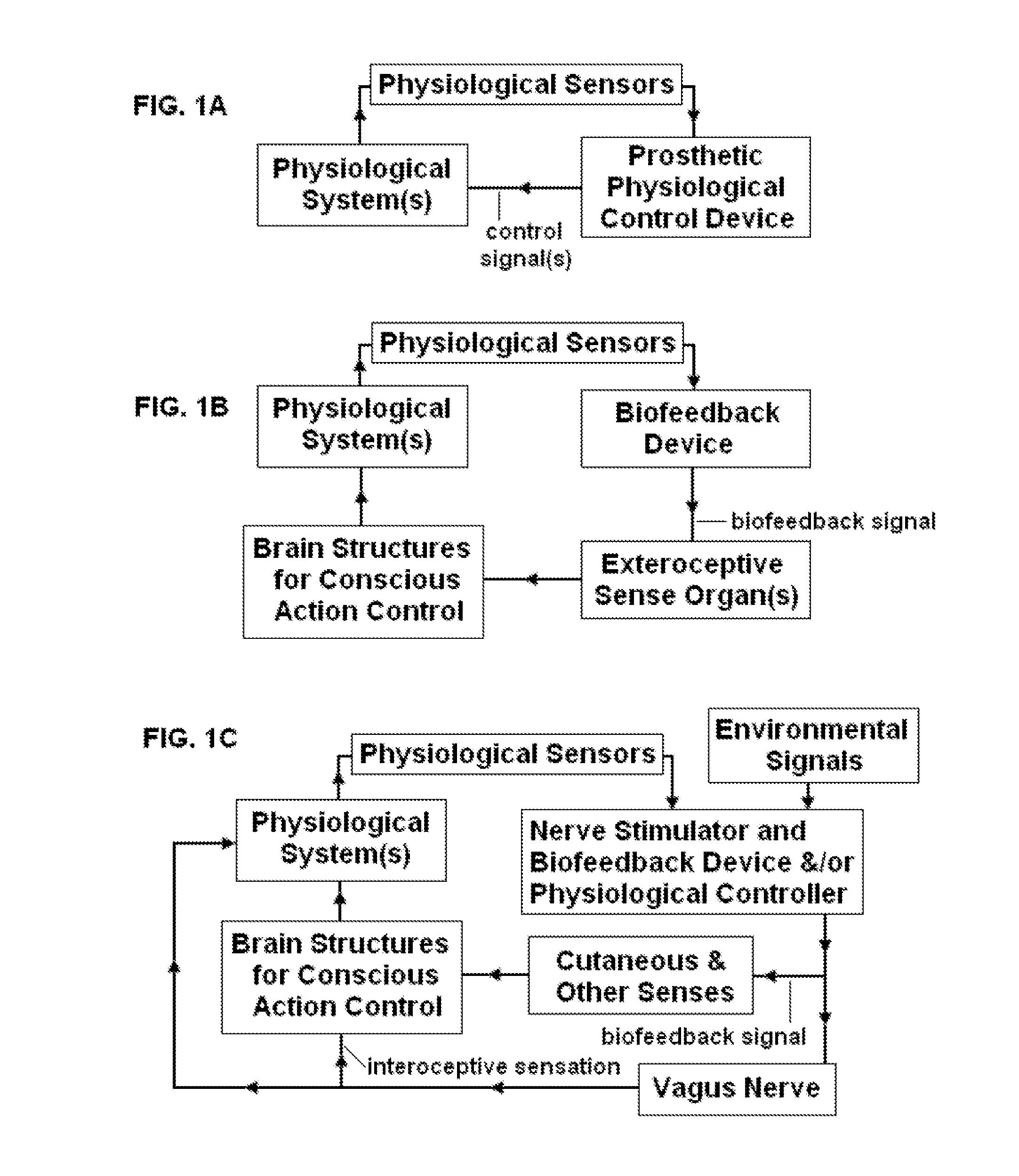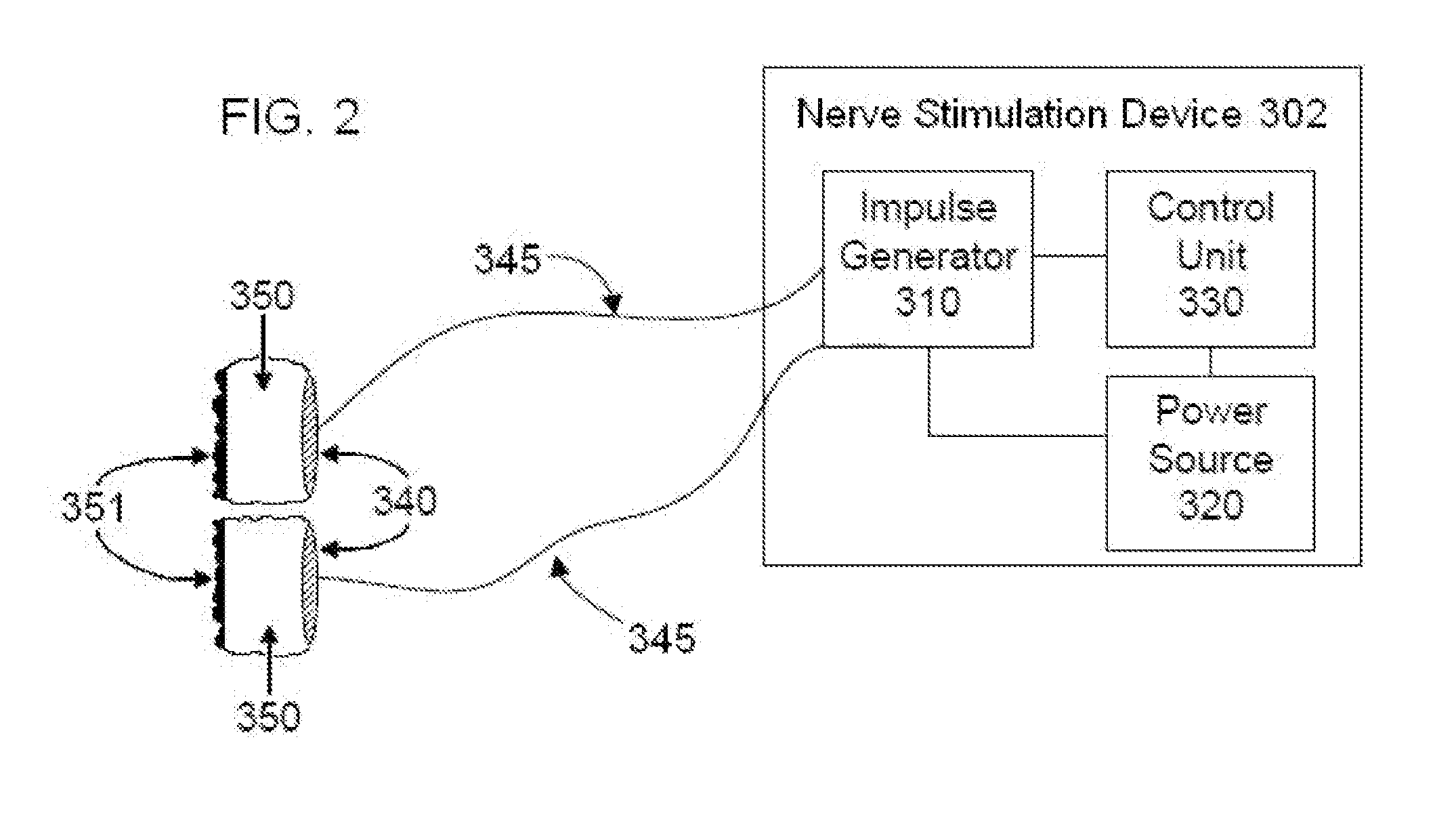Systems and methods of biofeedback using nerve stimulation
a nerve stimulation and biofeedback technology, applied in the field of delivery, can solve the problems of inability to address the issue of direct versus indirect voluntary control, inability to perform actual laboratory work, and inability to prove irreproducible,
- Summary
- Abstract
- Description
- Claims
- Application Information
AI Technical Summary
Benefits of technology
Problems solved by technology
Method used
Image
Examples
Embodiment Construction
[0063]In the present invention, electrodes applied to the skin of the patient generate electrical current or voltage impulses within tissue of the patient. One of the objectives of the invention is to apply the electrical impulses so as to interact with intrinsic signals of one or more nerves, in order to achieve a therapeutic result, with or without the simultaneous provision of a biofeedback signal to the patient. Much of the disclosure will be directed specifically to treatment of a patient by electrical stimulation in or around a vagus nerve, with devices positioned non-invasively on or near a patient's neck. As recognized by those having skill in the art, the methods should be carefully evaluated prior to use in patients known to have preexisting cardiac issues. It will also be appreciated that the devices and methods of the present invention can be applied to other tissues and nerves of the body, including but not limited to other parasympathetic nerves, sympathetic nerves, sp...
PUM
 Login to View More
Login to View More Abstract
Description
Claims
Application Information
 Login to View More
Login to View More - R&D
- Intellectual Property
- Life Sciences
- Materials
- Tech Scout
- Unparalleled Data Quality
- Higher Quality Content
- 60% Fewer Hallucinations
Browse by: Latest US Patents, China's latest patents, Technical Efficacy Thesaurus, Application Domain, Technology Topic, Popular Technical Reports.
© 2025 PatSnap. All rights reserved.Legal|Privacy policy|Modern Slavery Act Transparency Statement|Sitemap|About US| Contact US: help@patsnap.com



